|
Авторы:
Қалқанова Гүлжан
Ақылбекқызы
Алматы қаласы №86
мектеп-гимназия ағылшын пәні
мүғалімі
|
|
|
Long-term plan
Unit:
|
The Theme: Kazakh dishes
and sweets
|
|
Date: 24.05.2021
|
Teacher's name: Kalkanova
Gulzhan
|
|
CLASS: 2
V
|
|
Learning objective(s)
that this lesson is
contributing to
|
2.S3 use limited range
of basic words, phrases and short sentences to describe objects,
activities and classroom routines
2.L9 recognize the
spoken form of familiar words and
expressions
2.R1 read and spell out words
for others
|
|
Lesson objectives
|
Learners will be able
to:
|
|
pronounce familiar words
and expressions intelligibly
use can/can’t to describe
ability
|
|
Assessment
criteria
|
Learners have met the learning
objectives if they can use
|
|
Value
links
|
Lifelong
learning
|
|
Cross-curricular
links
|
World
cognition
|
|
ICT skills
|
Using flash cards and
videos,interactive
whiteboard
|
|
Previous learning
|
Home
cooking
|
|
Plan
|
|
Planned timings
|
Planned
activities
|
Resources
|
|
BEGINNING THE
LESSON
(5
min)
|
Good afternoon
children!
How are you
today?
|
|
|
PRESENTATION AND
PRACTICE
(30
min)
|
Task 1
( S3)
Look at the pictures. Tell
about things and activities using the
ideas.
Example: It is a birthday
cake. It is blue and tasty.
 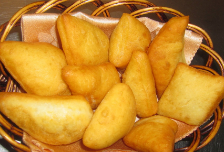 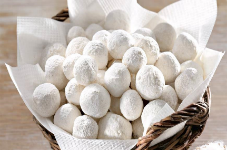
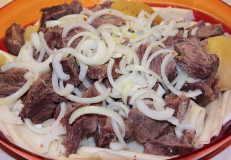 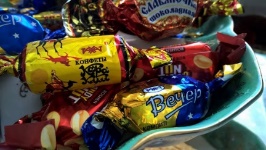
Task
2(L9)
Watch the video about
traditional Kazakh dishes and sweets and then say what did you
understood
https://youtu.be/6hiGUp7tB0w
Task
3(R1)
Read the sentence and spell
the underlined word.
Cook a
Beshbarmak 
Bake a cake.

Fry baursak
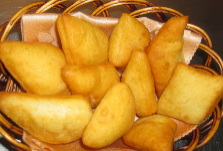
Make a kurt

Boil sorpa

|
|
|
ENDING THE
LESSON
(5
min)
|
Reflection
Three flashcards are given to
the learners
Happy cat – have no
questions
Hungry dog – have some
questions
Angry lion – have a lot of
questions
Learners raise the card that
is the most appropriate to their state of
mind.
  
Goodbye
song
Children sing and dance to the
song, repeating after the
picture.
|
|
|
Additional
information
|
|
Differentiation – how do
you plan to give more support? How do you plan to challenge the
more able learners?
|
Assessment – how are you
planning to check learners’
learning?
|
Health and safety check
ICT links
|
|
Less able students –
greater support by means of prompts,
visuals
More able students –
independent work on definite tasks with little/no
support
|
Through
observation
|
Work with the SMART
board not more than 10 minutes
Use water based
markers
Ensure proper
ventilation
Check sockets’
safety
|
|
Reflection
Were the lesson
objectives/learning objectives
realistic?
Did I stick to
timings?
What changes did I make
from my plan and why?
|
everything went as expected.
enough time for everything and managed to do
everything
|
|
Summary
evaluation
What two things went
really well (consider both teaching and
learning)?
1)
2)
What two things would
have improved the lesson (consider both teaching and
learning)?
1)
2)
What have I learned from this
lesson about the class or individuals that will inform my next
lesson?
|
Topic: Home
cooking
Learning
objective 2.S3 Use a limited range of
basic words, phrases and short
sentences to describe objects,
activities and classroom routines
2.L9 recognize the spoken form
of familiar words and
expressions
2.R1 read and spell out words
for others
Assessment
criteria • Talk about objects,
activities and classroom routines
• Apply topical vocabulary,
phrases and short sentences
• Identify familiar words and
expressions
• Read
words
• Spell out words for
others
Level of thinking
skills Application
Task 1
( S3)
Look at the pictures. Tell
about things and activities using the
ideas.
Example: It is a birthday
cake. It is blue and tasty.





Descriptor A
learner
• describes the
pictures;
• uses topic
words;
• pronounces words and phrases
intelligibly.
Task
2(L9)
Watch the video about
traditional Kazakh dishes and sweets and then say what did you
understood
https://youtu.be/6hiGUp7tB0w
Descriptor A
learner
• understand the
video;
•uses Kazakh dishes
names;
• pronounces words and phrases
intelligibly.
Task
3(R1)
Read the sentence and spell
the underlined word.
Cook a
Beshbarmak 
Bake a cake.

Fry baursak

Make a kurt

Boil sorpa

Descriptor A
learner
• reads the words
appropriately;
• names the letters of the
underlined words.































